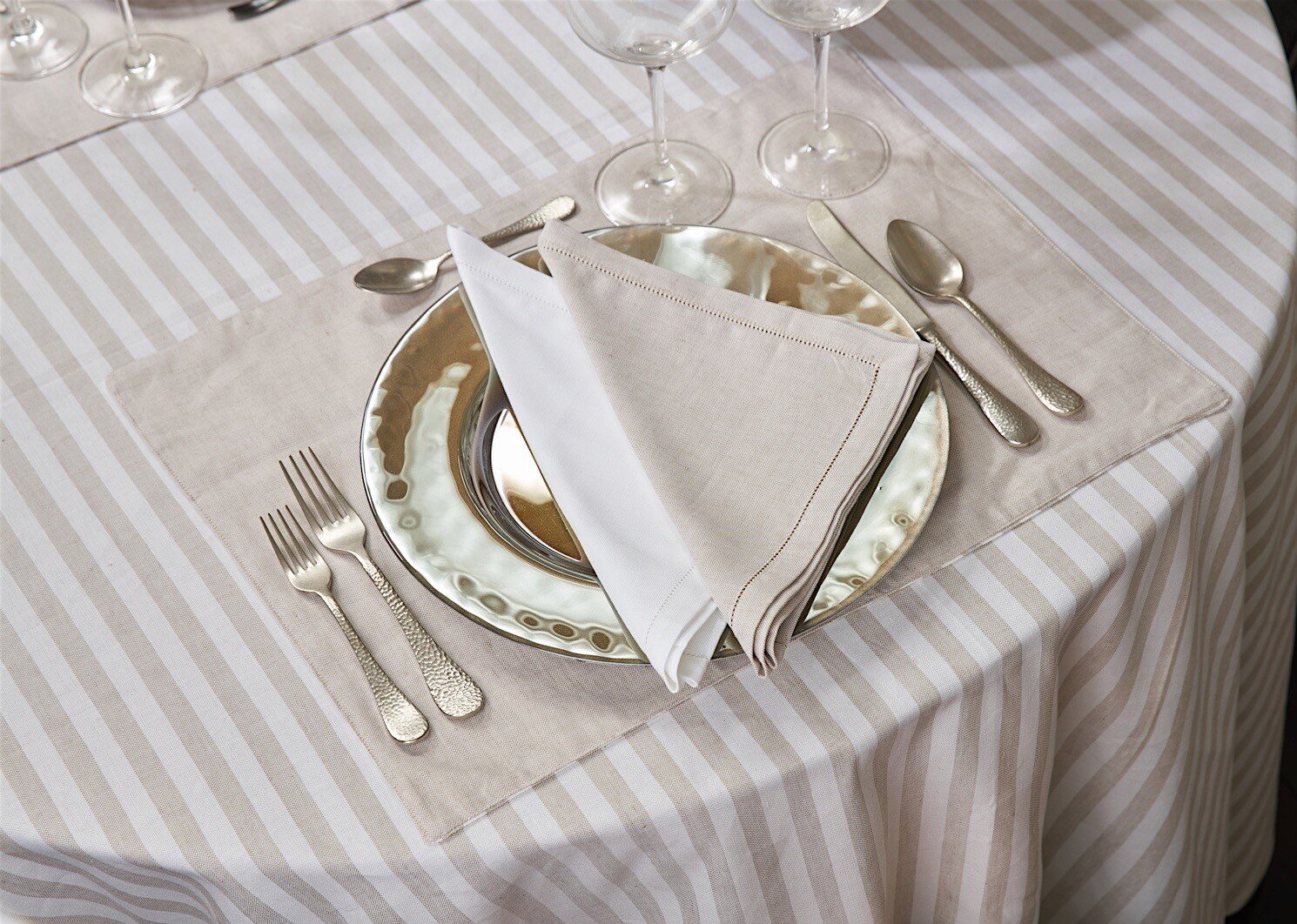Linen Textile Advancements: Discovering Modern Trends and Creative Applications in Layout and Textile Industry
From sustainable production techniques to cutting-edge weaving modern technologies, the advancement of linen is reshaping the landscape of the textile sector. As we dig into the worlds of creative design applications and the appearance of bed linen blends and hybrid fabrics, a new chapter unfolds in which linen's duty in future fabric technologies takes facility phase.
Lasting Practices in Bed Linen Manufacturing
Sustainable methods in linen production have actually become increasingly important in the fabric sector's initiatives to decrease ecological effect and advertise ethical sourcing techniques. Bed linen, a natural fiber stemmed from the flax plant, supplies a variety of advantages such as sturdiness, breathability, and biodegradability. However, typical techniques of bed linen manufacturing can entail significant water consumption, pesticide usage, and energy-intensive processes.
To address these difficulties, several textile manufacturers are embracing sustainable methods throughout the bed linen production process. This includes sourcing flax from natural ranches that prevent hazardous chemicals and chemicals, executing water-efficient retting methods to extract fibers from the flax stalks, and utilizing environment-friendly dyes and finishes. In addition, some business are buying renewable power sources to power their manufacturing centers and lowering waste through recycling and upcycling campaigns.
Technological Improvements in Linen Weaving
With the growing focus on sustainable methods in bed linen manufacturing, the fabric industry is currently seeing a rise in technical developments specifically aimed at transforming the art of bed linen weaving. These advancements are reshaping the means bed linen textiles are created, providing boosted effectiveness, top quality, and creative thinking in weaving methods.
One of the vital technical improvements in bed linen weaving is the integration of electronic looms. These innovative looms are geared up with software program that enables for complex and complex layouts to be woven with precision. By digitizing the weaving procedure, manufacturers can attain greater uniformity and accuracy in their linen fabrics.
Additionally, innovations in thread spinning modern technology have allowed the manufacturing of finer and more long lasting linen yarns - table cloths. This leads to softer and smoother bed linen materials that preserve their top quality even after multiple uses and laundries
Additionally, the growth of environmentally friendly dyeing procedures and coatings for bed linen textiles is obtaining traction. These sustainable practices not only minimize the ecological influence but also satisfy the boosting consumer need for ethically created fabrics.
Creative Design Applications for Linen
Cutting-edge creative strategies are significantly shaping the innovative style applications for bed linen in the textile industry. Designers are pressing the borders of conventional bed linen usage, exploring its versatility in various applications. One popular pattern is the integration of linen in lasting fashion lines, where its environment-friendly homes are highlighted. Linen's all-natural visual charm and capability to blend with other textiles make it a favored choice for developing unique garments and devices that accommodate the environmentally aware customer.
In addition, designers are try out bed linen in home design, using its durable and breathable nature to craft stylish home furnishings such as drapes, bedding, and furniture. The structure and drape of linen bring a feeling of sophistication and convenience to indoor rooms, adding a click touch of style to modern homes.
:max_bytes(150000):strip_icc()/__opt__aboutcom__coeus__resources__content_migration__brides__proteus__585bf60c786c7a9c62c877d2__11-a40aeea82c0a440282d07dadffc6a7d8.jpeg)
Linen Blends and Crossbreed Fabrics

Hybrid fabrics, on the various other hand, take the idea of blending an action further by integrating additional elements such as metal threads, recycled products, or conductive fibers. These ingenious fabrics not only increase the style possibilities however likewise introduce practical elements like conductivity, antimicrobial properties, or enhanced sturdiness. Crossbreed materials are increasingly being utilized in different markets, consisting of fashion, indoor style, and technical textiles, where the need for multifunctional materials is on the increase.
Linen's Function in Future Textile Innovations

In the realm of future textile advancements, linen is anticipated to be a principal in the advancement of advanced useful materials. Scientists and designers are exploring means to improve linen's fundamental qualities with technological improvements, such as including wise fabrics, nanotechnology, and performance surfaces. These technologies aim to elevate bed linen's efficiency qualities, making it ideal for a more comprehensive variety of applications, from activewear to protective apparel.
Additionally, the mix of bed linen with other all-natural or artificial fibers opens up countless possibilities for producing novel fabrics with distinct properties and capabilities. By leveraging bed linen's attributes and discovering cutting-edge blends, the textile sector is positioned to present amazing developments that accommodate advancing customer needs and sustainability needs.
Conclusion
In verdict, the expedition of lasting techniques, technical developments, imaginative layout applications, bed linen blends, and its role in future textile technologies highlight the constant advancement of linen textile in the contemporary design and textile industry. With a concentrate on technology and imagination, the versatility and green nature of bed linen make it an important material for designers and producers alike, leading the way for additional growths and improvements in the area of textiles.
As we dive into the realms of creative design applications and the emergence of bed linen blends and hybrid fabrics, a new phase unravels in which bed linen's function in future textile developments takes center phase.
Discovering the blend of bed linen with various other textiles has led to the appearance of ingenious blends and hybrid fabrics in the modern textile sector. Bed linen blends use an one-of-a-kind combination of the attributes of bed linen with those visit the website of other fibers, resulting in fabrics that have boosted homes such as enhanced longevity, enhanced draping, and lowered wrinkling.The advancement of bed linen blends and hybrid materials has actually established the phase for Linen to play a pivotal function in driving future fabric advancements.In the world of future textile advancements, bed linen is expected to be a key gamer in the development of advanced practical fabrics.